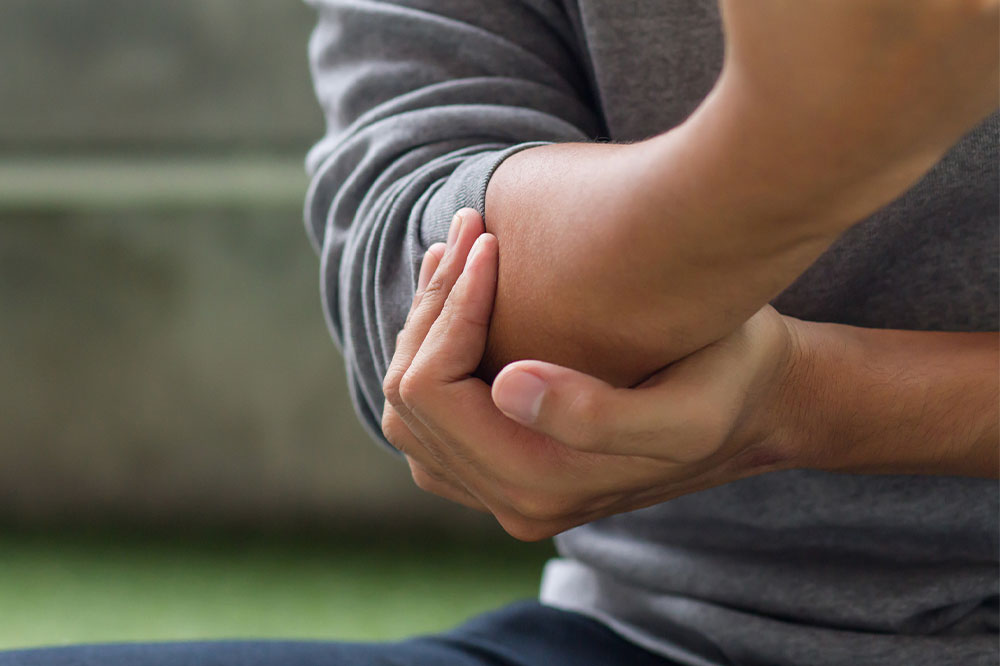
Gout – Causes, symptoms, and management
Gout is a form of inflammatory arthritis that affects vital joints in the body. While it can develop in any joint, it usually begins in the big toe and progresses gradually. If left unchecked, gout can lead to severe arthritis, triggering deformity of the joints. The condition has no cure, but it is possible to manage the symptoms and discomforts with simple home remedies and changes in nutrition and lifestyle.
Causes and risk factors
Gout develops due to uric acid buildup in the affected joint. While anyone can get it, the following risk factors make people more susceptible:
Gender
Men have a higher risk of developing gout early in life, with arthritis in general.
Chronic diseases
Health complications like congestive heart failure, hypertension, high insulin resistance, specific metabolic syndromes, diabetes, and kidney problems can trigger gout.
Side effects of specific treatments
Treatments that prevent the body from retaining water and salt increase the risk of calcification, triggering pain and stiffness.
High-fructose foods
Foods high in fructose (natural sugars) trigger an imbalance in blood glucose levels, worsening gout pain and the associated symptoms.
Excess purine consumption
Increased intake of purine (found in seafood, red meats, and organ meats) forces the body to break down uric acid and cause gout quickly.
Signs and symptoms
Gout is challenging to diagnose because it does not exhibit abrupt symptoms. Moreover, the signs that develop overlap with many other health conditions. A few examples are:
Unexplained chills
Sudden chills that are not caused due to underlying health complications or abrupt weather changes are a warning sign. Individuals may also develop an unexplained fever with chills and generally feel sick all the time as the body’s immune system gets compromised.
Joint pain
Pain in one or more joints that develops abruptly and persists is a major symptom of gout. This pain is often noticeable in the big toe as gout predominantly starts in this region.
Lumps under the skin
Excess uric acid in the body settles at the base of the joints, causing crystals to form under the skin. The lumps are painful to touch and can develop quickly without warning.
Swelling
Inflammation around the affected joint causes the area to become warm and sensitive, leading to visible swelling and enhanced pain.
Home remedies and tips for gout management
Gout can be managed to a great extent with simple changes in daily nutrition and lifestyle:
Staying hydrated
Water is an essential fluid that keeps many health conditions at bay. Drinking sufficient water helps the kidneys flush out uric acid and other toxins that can trigger gout flare-ups.
RICE method
Rest, ice, compression, and elevation are great strategies for relieving severe gout pain. Resting helps the joints recover from physical stress, ice packs and compression ease the pain, and elevating the joints makes the blood flow away from the joints, managing the inflammation.
Using walking aids
It is better to use extra support while dealing with severe pain and inflammation. A walking cane can take off some load from the bad foot and lower the risk of falls or injuries.
Supplements
After consulting a doctor, patients can consider supplements with natural extracts to counter inflammation and manage pain. Supplements with cherry, bromelain, ginger, and even guava leaf extracts have shown promising results.
Changes in daily nutrition
Some foods help people manage this condition better. For instance, dairy products like milk speed up uric acid excretion and lower the risk of crystallization in the joints. Caffeine, found in tea and coffee, has a similar effect. Those looking for fruits can consider cherries, a rich source of antioxidants that counter inflammation. Additionally, the meal plan should include purine-free meats, antioxidant-rich green vegetables, and fiber-rich whole grains.
Treatment options
In severe cases, doctors may recommend treatments in addition to home remedies:
Surgery
Surgery may help improve the long-term outlook when gout triggers deformity of the joints. Joint fusion is a procedure to fuse and stabilize two deformed joints. Doctors may suggest a complete joint replacement if joint fusion does not work. Further, surgery can be used to remove uric acid crystals from the joints.
Topical creams
Topical creams can provide relief from the outside by managing the inflammation and swelling that causes flare-ups. It is a temporary but helpful solution for many people.
Besides these treatments, health experts may recommend options to counter swelling and pain and prevent the body from producing excess uric acid. Patients should consult a doctor to learn about the best remedy and pain relief tips for managing their condition.




